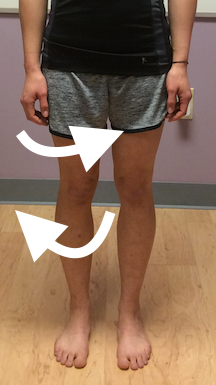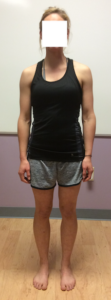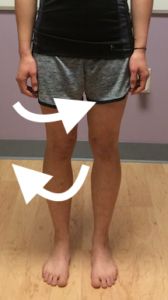
Question: My knee has been hurting for a couple of months. My X-rays and MRI show no damage to my knee. My direct knee exam didn’t show anything either, but my knee still hurts. Any ideas?
Answer: Many people suffering from knee pain seek help from health professionals only to be told that there’s nothing wrong with their knee.
That doesn’t mean there is no cause. After all, the knee does hurt.
In such case, it may simply be a loss of adaptability of the knee.
Knees obviously bend forward and back, but they also have a normal ability to twist inward and outward to a small degree. This allows the knee to adapt to uneven surfaces that you may not be able to see such as when walking across an unfamiliar grassy area.
If the twisting movement of the knee becomes limited by repetitive activities or a lack of physical activity, this may result in prolonged or increased pressure on areas of the knee. Over time, this may result in knee pain.
The photos below show what that presentation may look like. As you can see, this patient’s right thigh turns inward and the lower leg turns outward. In this case, if her knee is unable to twist normally, it could result in patellar tendonitis, patellofemoral pain (pain behind the kneecap), or create a general aching over the front or inside of the knee.
This type of presentation is not uncommon for any knee, painful or not. It’s only when the normal twist isn’t enough to adapt to your activities, or it’s even possible that it may twist too much (Heiderscheit, 2002). This can be identified during an exam.
In my next blog, I’ll be providing some strategies to help address this type of knee pain issue. Until then, consider coming in to take advantage of our free IFAST Physical Therapy Injury Consult. We’ll answer all your questions and show you how quickly we can improve your knee pain. You are not under any obligation, and again, it is free of charge.
Call IFAST Physical Therapy today
on the northeast side of Indianapolis today for
your free injury consultation.
317-578-0998


0 Comments
Join the conversation